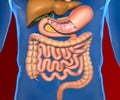- A device acting like a ‘drug sponge’ has been developed that can soak-up toxic drugs in the bloodstream
- Excess chemotherapy drugs leaving a cancerous organ can be soaked-up by the ‘drug sponge’ inserted in a vein emerging from the target organ
- This can significantly minimize the spread of toxicity to other parts of the body
The study was jointly led by Dr. Nitash Balsara, PhD and Dr. Steven Hetts, MD. Dr. Balsara is a Professor of Chemical and Biomolecular Engineering at the University of California, Berkeley (UCB) and a Faculty Associate Scientist at the Lawrence Berkeley National Laboratory, Berkeley, California, USA. Dr. Hetts is a Professor of Radiology at the University of California, San Francisco (UCSF) and Chief of Interventional Neuroradiology at the UCSF Mission Bay Hospitals, San Francisco, USA.
The study has been published in the journal ACS Central Science, an open-access publication of the American Chemical Society.
Read More..
How was the ‘Drug Sponge’ Conceptualized?
The ‘drug sponge’ was conceptualized by Hetts, while treating cancer patients with chemotherapy drugs, which he delivered with the help of a catheter so that the drug is released very close to the target organ. This ensures that the tumor receives the maximal dose, causing minimal toxicity to the rest of the body, thereby substantially reducing side-effects. This is much better than the conventional approach, where the chemotherapy drug is directly injected into the bloodstream, which causes widespread toxicity throughout the body. Moreover, by this method, more than 50 percent of the drug fails to reach the target organ. Hetts conceptualized that if the excess chemo drug leaving the target organ could be filtered out, much less drug would enter the circulation, thereby significantly reducing toxicity to other organs.How was the ‘Drug Sponge’ Developed?
The ‘drug sponge’ was developed by Balsara and his team at his UCB laboratory. The sponge is based on ionic polymers that are used in batteries and fuel cells. After screening various types of polymers, a polymer was identified that was capable of absorbing doxorubicin.“An absorber is a standard chemical engineering concept,” Balsara said. “Absorbers are used in petroleum refining to remove unwanted chemicals such as sulfur. Literally, we’ve taken the concept out of petroleum refining and applied it to chemotherapy.”
The new absorbent polymer was commercially produced in large quantities and the technology was tweaked so that it could adhere to a 3D-printed cylinder. Crisscrossing struts were incorporated on the surface of the cylinder, onto which the polymer was attached, so that the whole device could be inserted into a patient’s vein.
“Fitting the cylinder in the vein is important; if the fit is poor, then the blood with the dissolved drug will flow past the cylinder without interacting with the absorbent,” Balsara said.
The size and dimension of the 3D-printed cylinder were customized so that it could fit into the vein of each patient, who may have different vein diameters. This was engineered by Carbon Inc., a company specializing in 3D-printing, based in Redwood City, California, USA.
After implanting the 3D-printed device into the vein of a healthy pig, Hetts measured how much of doxorubicin, injected upstream, was absorbed by the ‘drug sponge’ device, placed downstream. He found that approximately 64 percent of the drug was absorbed.
How Can the ‘Drug Sponge’ Improve Chemotherapy?
Since most anticancer drugs are highly toxic, the doctors need to regulate the dose in such a way that it is high enough to kill the cancer cells, but not high enough to cause toxicity to the other organs of the body. In spite of this, chemo drugs cause many serious side-effects, including nausea, vomiting, hair loss, diarrhea, ulcers, as well as immunosuppression, which suppresses the body’s defense system, so that it can’t fight back.The present study has evaluated the efficacy of the ‘drug sponge’ in a liver cancer model using the chemo drug doxorubicin.
In this regard, Hetts said: "We are developing this around liver cancer because it is a big public health threat - there are tens of thousands of new cases every year - and we already treat liver cancer using intra-arterial chemotherapy".
He added: “But if you think about it, you could use this sort of approach for any tumor or any disease that is confined to an organ, and you want to absorb the drug on the venous side before it can distribute and cause side-effects elsewhere in the body. Ultimately, we would like to use this technology in other organs to treat kidney tumors and brain tumors.”
Future Plans
Now that the ‘proof-of-principle’ has been established in pigs, the researchers want to take it to the next level i.e. human testing. They are seeking approval from the US Food and Drug Administration (USFDA) to directly proceed to “first-in-human” studies without having to do further animal studies. They opine that this will be much more realistic as liver cancer is primarily a problem in humans and not in pigs. The research team is optimistic that since the device is for temporary use, the FDA will likely set lower criteria for approving it for clinical testing.Conclusion
The study indicates that the ‘drug sponge’ device could also be applied for other types of cancers, as well as other classes of chemo drugs. Moreover, the same technology could be used for soaking-up other types of toxic drugs such as antibiotics, which can potentially cause kidney damage.References:
- 3D Printed Absorber for Capturing Chemotherapy Drugs before They Spread through the Body - (https://pubs.acs.org/doi/10.1021/acscentsci.8b00700)
















